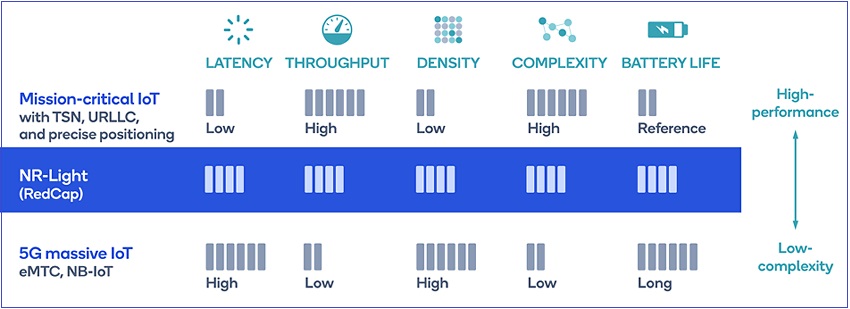Optus’ introduction of Reduced Capability (RedCap) 5G mobile technology will enable video watches, augmented-reality (AR) glasses, remote cameras and Internet of Things (IoT) devices without draining their batteries – but marketing it could be a challenge.
Designed to complement the two versions of 5G already in use – high-speed New Radio (NR) services that drain batteries quickly, and low-powered NB-IoT services that provide low speed and long battery life – RedCap, also known as NR-Light, provides a middle-tier 5G service with longer battery life and speeds of up to 150Mbps download and 50Mbps upload.
That makes it a ‘Goldilocks’ option between low-powered IoT networks and high-speed 5G services – which offer some of the world’s fastest speeds, but are only practical to access with devices large enough to have high-capacity batteries or plug into mains power.
Whereas IoT devices like remote temperature monitors, water gauges, rhinoceros trackers or paddock gate switches sporadically send tiny amounts of information, RedCap will enable such devices to transmit more data, more often, without depleting their batteries quickly.
This design makes it ideal for what chipmaker Qualcomm calls ‘mid-tier use cases’ such as health monitors, AR devices, environmental sensors, video surveillance, industrial sensors, and smart city applications – with Optus particularly positioning RedCap as a way of providing high-speed connections to connected personal devices.
The new service “is about catering for 5G for wearable devices, like watches, so customers can benefit from accessing the most up to date technology in their daily lives,” said Optus managing director of networks Lambo Kanagaratnam.
Now that Optus has successfully completed its first RedCap data call – using RedCap software from telecommunications giant Ericsson and calling software from MediaTek to carve out smaller channels on the Optus 5G network – “we are paving the way for future 5G wearable devices,” Kanagaratnam said.
But will customers buy it?
The announcement comes just days after the emergence of speculation that Apple is close to overhauling its market-leading Apple Watch – with a planned 2024 or 2025 ‘Watch X’ expected to combine significant new features with a new band system, bigger battery, and other changes.
With RedCap more widely available by the time that and similar watches are available, the devices could potentially incorporate features like a camera and video calling, while retaining all-day battery life.

Source: Qualcomm
Yet while smart watches are a use case that most consumers can relate to, many of the other, more esoteric uses for RedCap may fall on deaf ears as Optus tries to drum up consumer enthusiasm for the technology.
That’s because, despite enthusiasm for IoT within tech circles – and predictions that the world will spend over $1.2 trillion ($US805.7 billion) on IoT this year – most consumers still don’t understand what IoT means, how it relates to their lives, or why they should trust it.
Only 24 per cent of respondents to a new Utimaco survey – which polled over 6,000 consumers in six countries – said they would be able to define the term ‘Internet of Things’ and just 26 per cent said they use IoT technology.
When asked the same question with the term ‘smart technology’, the proportion of positive responses jumped to 38 per cent.
The most commonly used smart devices, however, were well-understood technologies like smart TVs – owned by 61 per cent of respondents – and virtual assistants like Amazon Alexa or Google Home, owned by 52 per cent.
Utimaco found similar apathy to the idea of smart cities – one of the most significant applications for IoT technology – suggesting that companies marketing IoT devices, applications, or mobile networks have their work cut out to win over consumers that have already proven underwhelmed by 5G.
“We’re living in an increasingly digital world with more connected and smart devices that need to be secured,” said Utimaco CEO Stefan Auerbach, noting that the survey results “show that more work is needed to create trust and reassurance for consumers and their connected devices.”










